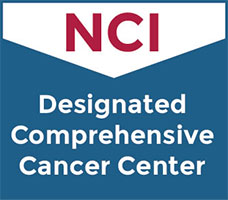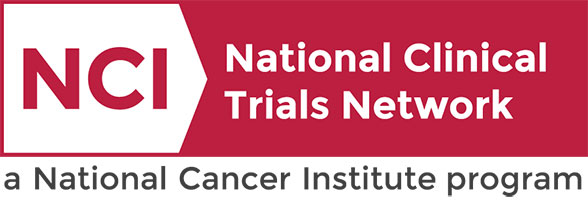Langerhans Cell Histiocytosis
- Langerhans cell histiocytosis is a rare disorder that can damage tissue or cause lesions to form in one or more places in the body.
- It is not known whether LCH is a form of cancer or a cancer-like disease.
- Family history of cancer or having a parent who was exposed to certain chemicals may increase the risk of LCH.
- The signs and symptoms of LCH depend on where it is in the body.
- Bone
- Skin and nails
- Mouth
- Lymph nodes and thymus
- Endocrine system
- Eye
- Central nervous system (CNS)
- Liver and spleen
- Lung
- Bone marrow
- Tests that examine the organs and body systems where LCH may occur are used to diagnose LCH.
- Certain factors affect prognosis (chance of recovery) and treatment options.
Osteosarcoma and Malignant Fibrous Histiocytoma of Bone
- Osteosarcoma and undifferentiated pleomorphic sarcoma (UPS) of bone are diseases in which malignant (cancer) cells form in bone.
- Having past treatment with chemotherapy or radiation can increase the risk of osteosarcoma.
- Signs and symptoms of osteosarcoma and UPS include swelling over a bone or a bony part of the body and joint pain.
- Imaging tests are used to detect (find) osteosarcoma and UPS.
- A biopsy is done to diagnose osteosarcoma.
- Certain factors may affect prognosis (chance of recovery) and treatment options.
Ewing Sarcoma
- Ewing sarcoma is a type of tumor that forms in bone or soft tissue.
- Undifferentiated round cell sarcoma may also occur in the bone or soft tissue.
- Signs and symptoms of Ewing sarcoma include swelling and pain near the tumor.
- Tests that examine the bone and soft tissue are used to diagnose and stage Ewing sarcoma.
- A biopsy is done to diagnose Ewing sarcoma.
- Certain factors affect prognosis (chance of recovery).
Extracranial Germ Cell Tumors
- Childhood extracranial germ cell tumors form from germ cells in parts of the body other than the brain.
- Childhood extracranial germ cell tumors may be benign or malignant.
- Childhood extracranial germ cell tumors are grouped as gonadal or extragonadal extracranial tumors.
- Gonadal germ cell tumors
- Extragonadal extracranial germ cell tumors
- There are three types of extracranial germ cell tumors.
- Teratomas
- Malignant germ cell tumors
- Mixed germ cell tumors
- The cause of most childhood extracranial germ cell tumors is unknown.
- Having certain inherited disorders can increase the risk of extracranial germ cell tumors.
- Signs of childhood extracranial germ cell tumors depend on where the tumor formed in the body.
- Imaging studies and blood tests are used to diagnose childhood extracranial germ cell tumors.
- Certain factors affect prognosis (chance of recovery) and treatment options.
Central Nervous System Germ Cell Tumors
- Childhood central nervous system (CNS) germ cell tumors form from germ cells.
- There are different types of childhood CNS germ cell tumors.
- Germinomas
- Nongerminomas
- Teratomas
- The cause of most childhood CNS germ cell tumors is not known.
- Signs and symptoms of childhood CNS germ cell tumors include unusual thirst, frequent urination, or vision changes.
- Imaging studies and other tests are used to help diagnose childhood CNS germ cell tumors.
- A biopsy may be done to be sure of the diagnosis of a CNS germ cell tumor.
- Certain factors affect prognosis (chance of recovery).

Smita Misra, PhD
- Assistant Professor
Smita Misra, PhD
- Assistant Professor
smisra@mmc.edu
Research Program
Featured Speakers:
Denise Aberle, MD
(UCLA Jonsson Comprehensive Cancer Center)
is a professor of Radiology in the School of Medicine and professor of Bioengineering in the Henry Samueli School of Engineering and Applied Sciences. She is board-certified in Internal Medicine and Diagnostic Radiology. Dr. Aberle's research centers on lung cancer screening, early diagnosis, prevention, and screening implementation. Other interests include oncologic imaging for response assessment; quantitative image analysis, and oncology informatics.
M. Patricia Rivera, MD, ATSF, FCCP
(URMC Wilmot Cancer Center)
is the C. Jane Davis & C. Robert Davis Distinguished Professor in Pulmonary Medicine, Chief of the Division of Pulmonary Diseases and Critical Care Medicine at the University of Rochester Medical Center (URMC). Dr. Rivera specializes in lung cancer screening, diagnosis, staging, and management of treatment complications.
Julien Sage, PhD
(Stanford Cancer Institute)
is the Elaine and John Chambers Professor in Pediatric Cancer and a Professor of Genetics at Stanford University where he serves as the co-Director of the Cancer Biology PhD program. Dr. Sage became initially interested in small cell lung cancer because of the nearly ubiquitous loss of RB in this cancer type and the intriguing relationship in mice and humans between loss of RB and the growth of neuroendocrine lesions. In the past few years, the Sage lab has developed pre-clinical models for small cell lung cancer and has used these models to investigate signaling pathways driving the growth of this cancer type and to identify novel therapeutic targets in this recalcitrant cancer.
Sudhir Srivastava, PhD, MPH
(National Cancer Institute)
is the Chief of the Cancer Biomarkers Research Group at the National Cancer Institute. His efforts focus on molecular biology of malignancies, early malignancies, risk assessment, and informatics, providing leadership in the areas of molecular screening and early detection. He is one of the principal authors of the Bethesda Guidelines for diagnosing Hereditary non-polyposis colorectal cancer.


